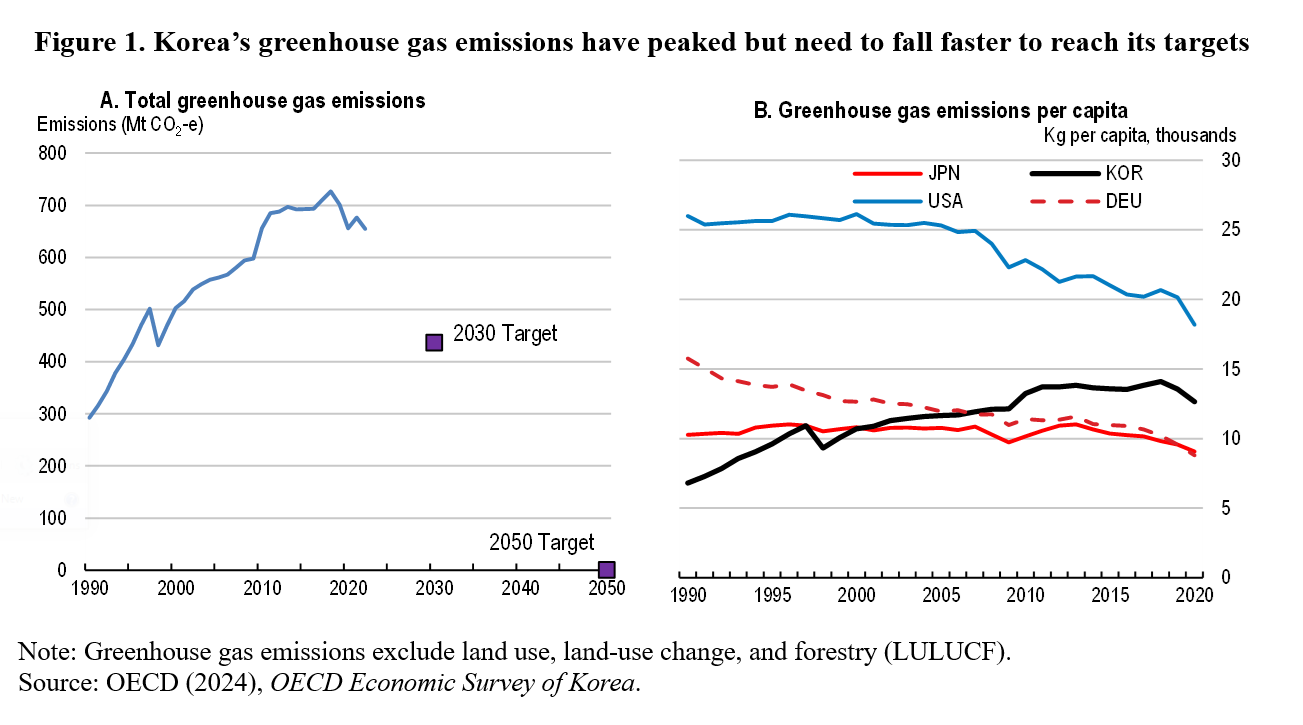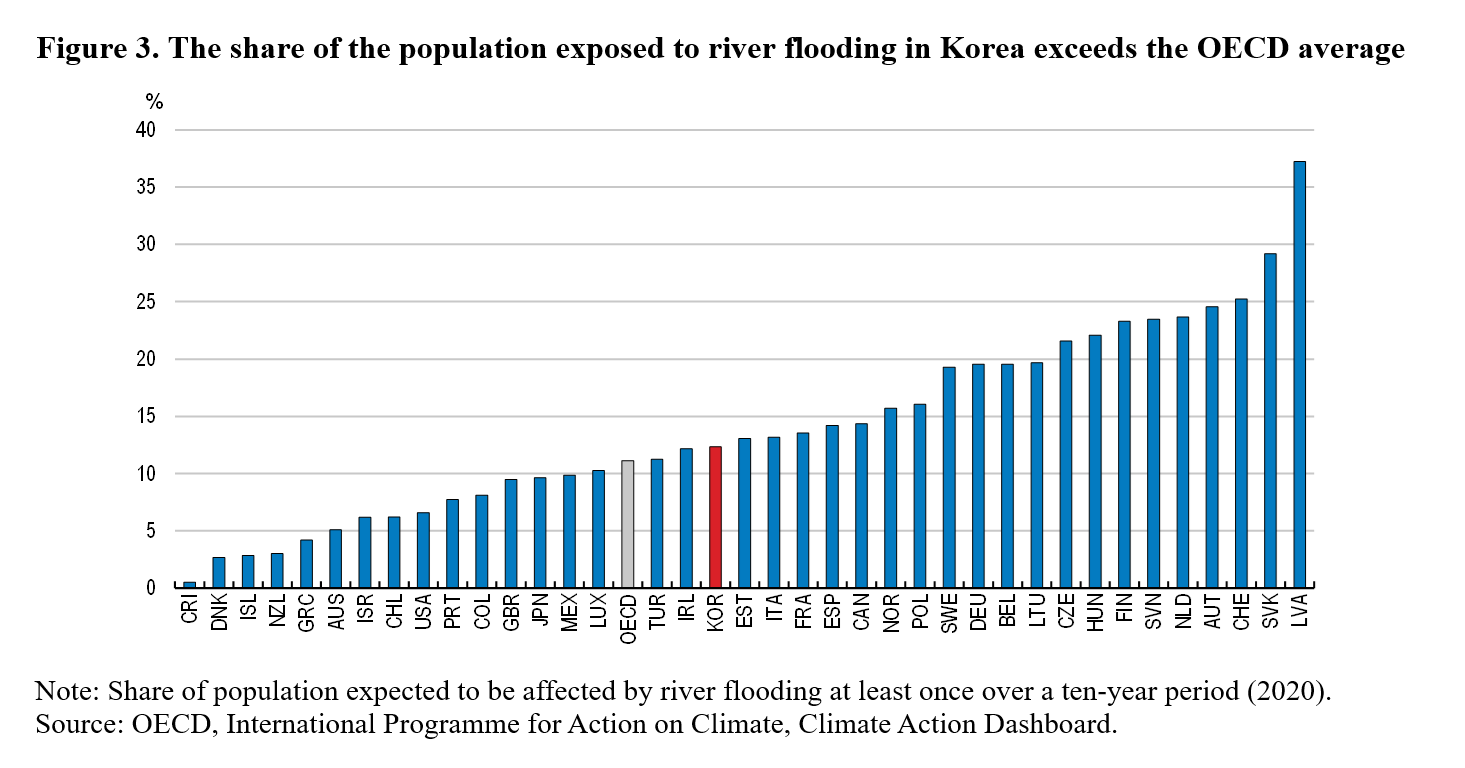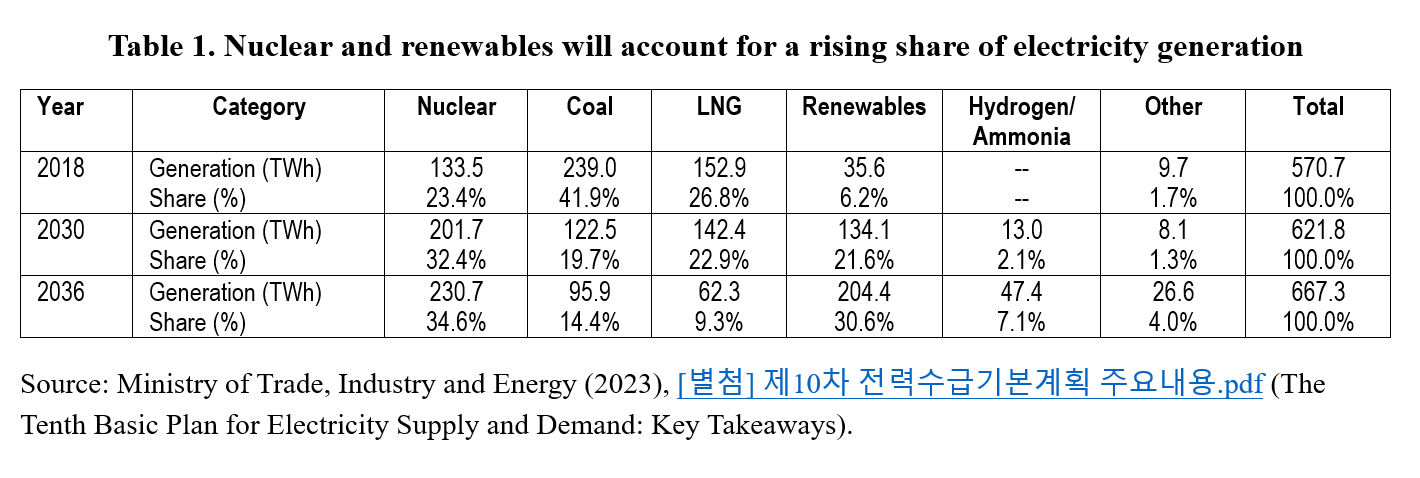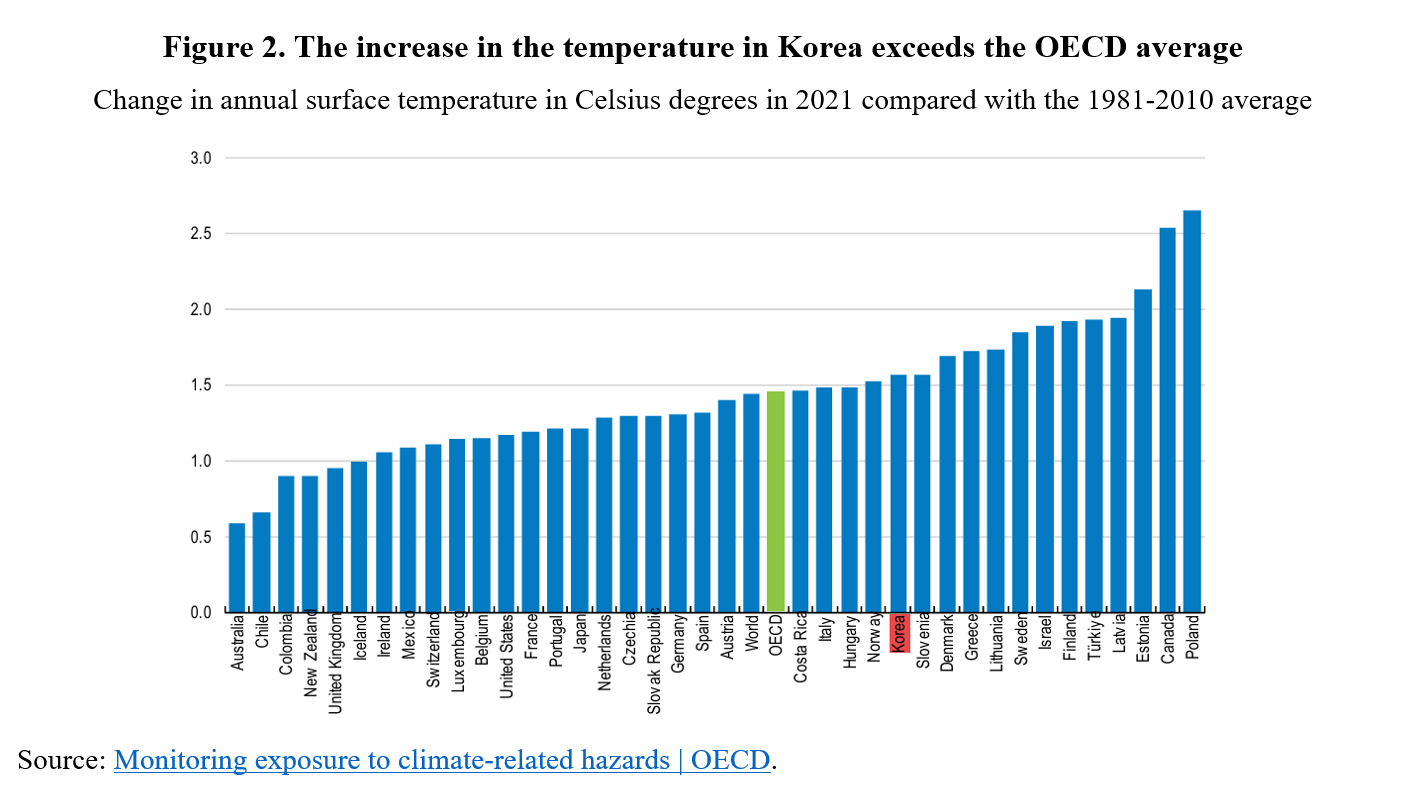South Korea’s Efforts to Adapt to the Impact of Climate Change
South Korea’s Nationally Determined Contribution (NDC) under the Paris Agreement sets a target of reducing its greenhouse gas (GHG) emissions by 40 percent by 2030 (relative to their peak in 2018). Korea also aims to achieve carbon neutrality by 2050 (Figure 1, Panel A). The targets are ambitious, as Korea was the world’s thirteenth-largest GHG emitter in 2023. On a per-capita basis, emissions also peaked in 2018 (Panel B)—the fifth-highest among OECD countries, reflecting the important role of energy-intensive industries such as petrochemicals, iron, and steel in the Korean economy. Although the energy supply per unit of GDP has fallen by about 30 percent since 2000, Korea is the third most energy-intensive economy in the OECD.

Korea established its first Basic Plan for Carbon Neutrality and Green Growth in 2023, which covers twenty years. A key element in achieving Korea’s climate goals is shifting to carbon-free electricity. The government’s Tenth Basic Plan on Electricity Supply and Demand aims to reduce the share of coal and LNG in electricity generation from 56 percent in 2018 to 36 percent by 2036 by increasing the shares of renewables and nuclear power and adding new energy sources, such as hydrogen and ammonia (Table 1).
The Impact of Climate Change in Korea
The annual mean temperature in Korea in 2021 was 1.5 degrees Celsius (2.7 degrees Fahrenheit) higher compared to the 1981–2010 period, an increase slightly above the OECD average (Figure 2). The number of “heat wave days,” defined as a temperature of at least 35 degrees Celsius (95 degrees Fahrenheit), rose from an average of twenty-one days between 2004 and 2013 to fifty-one days between 2014 and 2023. During the past thirty years, summers have become twenty days longer and winters twenty-two days shorter.
The risks of both flooding and drought have risen as the average amount of precipitation has risen while the number of rainy days has fallen. Indeed, the share of the population in Korea that is expected to be affected by river flooding at least once during a ten-year period is 12.3 percent (Figure 3). In addition, the sea level has already risen by nearly four inches. Flash flooding and typhoons during the monsoon season pose serious risks. In addition to river and coastal flooding, drought, extreme temperatures, wildfires, and wind pose threats. Korea has one of the highest exposures to tropical cyclones.
Reducing the Risks Associated with Climate Change Requires Adaptation Policies
Despite the efforts of Korea and many other countries to mitigate climate change, global temperatures continue to rise, increasing the likelihood of climate disasters and posing significant economic risks. The physical risks from climate change threaten public finances, investment, inflation, international trade, and overall economic growth, underscoring the urgent need for effective climate adaptation. An effective adaptation policy requires correctly identifying changes in weather patterns at the local level and assessing exposure and vulnerability based on a number of factors, such as population density and economic activity. Adaptation can require a wide range of actions: i) technical measures, such as flood barriers, irrigation systems, and green roofs; ii) infrastructure planning and regulatory measures, for example, to change the settlement structure and transport systems; iii) behavioral and organizational measures such as changing working hours and diet; and iv) structural economic adjustments, including research and development to improve adaptation, reallocation of economic activity away from affected sectors, and diversification of trade and production.

Implementing comprehensive and forward-looking adaptation policies would limit the economic damage from climate change and reduce the need for and costs of emergency responses. However, a recent study by the OECD concluded, “Despite its benefits, adaptation action is lagging and insufficient to meet current and future climate-change risks” in the OECD area. According to the IPAC Climate Actions and Policies Measurement Framework (CAPMF), a climate policy tracker, climate mitigation action adopted by OECD member countries and partners increased by 1 percent and 2 percent in 2022 and 2023, respectively, compared with an average 10 percent annual increase between 2010 and 2021.
Korea’s Progress in Adapting to Climate Change
The Korean government recognizes climate change as a significant threat to society and has been committed to establishing a comprehensive approach to adapt to its effects. In 2009, the government created the Korea Adaptation Center for Climate Change to systematically support adaptation policy and research. It has three principal objectives:
– Infrastructure: requiring sixty-two public institutions that are responsible for critical social infrastructure to establish and implement adaptation plans every five years.
– Private sector: enhancing the adaption capacity of the private sector.
– Vulnerable groups: identifying and supporting groups that are vulnerable to climate change.
Korea established its first National Climate Change Adaptation Plan (NAP) for 2011–2015 in 2010, and it has been updated every five years. The third NAP (for 2021–2025) focuses on three pillars: i) improving climate resilience; ii) strengthening monitoring, forecasting, and assessment of climate change; and iii) mainstreaming adaptation in all corners of society. In addition, local governments have been legally required to do adaptation planning since 2015, and public entities managing climate-vulnerable facilities have been required to establish and implement their own adaptation plans since 2022. Korea has taken an active and comprehensive approach to adapting to challenges related to climate change.


댓글
댓글 쓰기